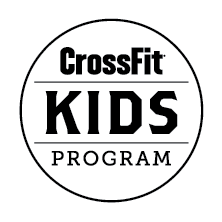STAYING SAFE IN EXTREME HEAT
By Lisa
Arizona is one of the hottest places on earth from May to September. You know this, because by now, you’ve experienced your feet burning into the blacktop while running outside. Yep, it’s hot here in Peoria, AZ. Even Arizona Natives, like Brian and me, can be shocked at how hot it can get while going our fifth run of “Kelly” in the hot summer months. Heat-related illnesses are common during the summer and can be fatal. As CrossFitters, we exercise hard all year round and we’re known to push ourselves, sometimes to a place that is dangerous to our health. We know that it isn’t practical to avoid going outside for five months of the year, but there are things we can do to stay safe in the summer heat.
Heat-related illnesses are preventable and there are things you can do to minimize the risk of getting sick. According to the Arizona Department of Health Services, your body keeps itself cool by letting heat escape through the skin and by evaporating sweat. If your body does not cool properly or does not cool enough, you might suffer from heat-related illness. Anyone can be sucsesptible to heat-related illness, but as Arizona CrossFitters, we need to pay special attention to the signs and symptoms.
Signs & Symptoms of Heat-Related Illness
Heat-related illnesses can progress quickly. Recognizing the symptoms of heat-related illness is important so that you don’t progress to the stages of heat exhaustion or heat stroke (which could be life threatening).
When temperatures are on the rise, watch for the following symptoms:
- Thirst: By the time your body tells you that you are thirsty, you are already mildly dehydrated.
- Heat cramps: Heat cramps are muscular pains and spasms due to heavy exertion. They usually involve the abdominal muscles or the legs. The loss of water and salt from heavy sweating causes heat cramps.
- Heat Exhaustion: Heat exhaustion is less dangerous than heat stroke. It typically occurs when people exercise heavily or work in a warm, humid place where body fluids are lost through heavy sweating. Fluid loss causes blood flow to decrease in the vital organs, resulting in a form of shock. With heat exhaustion, sweat does not evaporate as it should, possibly because of high humidity or too many layers of clothing. As a result, the body is not cooled properly. Signals include cool, moist, pale, flushed or red skin; heavy sweating; headache; nausea or vomiting; dizziness; and exhaustion. Body temperature will be near normal.
- Heat Stroke: Also known as sunstroke, heat stroke is life-threatening. The victim’s temperature control system, which produces sweating to cool the body, stops working. The body temperature can rise so high that brain damage and death may result if the body is not cooled quickly. Signals include hot, red and dry skin; changes in consciousness; rapid, weak pulse; and rapid, shallow breathing. Body temperature can be very high—sometimes as high as 105° F.
Stages of Heat-Related Illness
Heat-related illness usually comes in stages. The signal of the first stage is thirst. Drinking water at this stage can prevent you from progressing to the more serious kinds of heat related illnesses. The next stage is muscle cramps. These cramps can be mild or very painful. If you are caring for a person who has heat cramps, have him or her stop activity and rest. If the person is fully awake and alert, have him or her drink small amounts of cool water or a commercial sports drink. Gently stretch the cramped muscle and hold the stretch for about 20 seconds, then gently massage the muscle. Repeat these steps if necessary. If the victim has no other signals of heat-related illness, the person may resume activity after the cramps stop.
The signals of the next, more serious stage of a heat-related illness (often called heat exhaustion) include:
- Cool, moist, pale skin (the skin may be red right after physical activity).
- Headache.
- Dizziness and weakness or exhaustion.
- Nausea.
- The skin may or may not feel hot.
The warning signs of the most serious stage of a heat-related illness (often called heat stroke or sun stroke) vary but may include:
- Vomiting.
- Confusion.
- Throbbing headache.
- Decreased alertness level or complete loss of consciousness.
- High body temperature (sometimes as high as 105° F).
- Skin may still be moist or the victim may stop sweating and the skin may be red, hot and dry.
- Rapid, weak pulse.
- Rapid, shallow breathing.
- Seizures.
NOTE: Heat stroke is life threatening. Call 9-1-1 or the local emergency number if you are suffering from any of the above symptoms.
Preventing Heat-Related Illness
Staying healthy during the summer is easier if you take the time to protect yourself by making sure you are drinking enough water and limiting your exposure to the heat. Follow these simple rules:
- Drink water. Even people that stay mostly indoors all day should drink at least 2 liters of water per day. People that spend time outdoors should drink 1 to 2 liters per hour that they are outdoors. People that do strenuous activity outdoors should be very careful, being your body can lose up to 4 liters of water per hour during strenuous activity. You should carry water with you and drink even if you do not feel thirsty. Be heat safe and avoid alcohol and caffeine, which dehydrate the body. Avoid using salt tablets unless directed to do so by a physician.
- Dress for the heat. Wear lightweight, light-colored clothing. Light colors will reflect away some of the sun’s energy. It is also a good idea to wear hats or to use an umbrella. Always apply sunscreen to exposed skin.
- Eat small meals and eat more often. Avoid foods that are high in protein which increase metabolic heat.
- Slow down. Avoid strenuous activity. If you must do strenuous activity, do it during the coolest part of the day, which is usually in the morning between 4:00 a.m. and 7:00 a.m.
- Stay indoors when possible.
- Take regular breaks when engaged in physical activity on warm days. Take time out to find a cool place. If you recognize that you, or someone else, are showing symptoms of a heat-related illness, stop activity and find a cool place.
Be Smart About Exercising in the Summer
Incendians, you’ve got to be your own advocate when it comes to avoiding heat-related illnesses. So much of what you do outside of the gym factors into what happens inside the gym. It is not smart to drink no water the day before a running WOD, then to tie one on the night before a running WOD, then have nothing but coffee the morning prior to that WOD. You can and will get sick. Hydration begins the day before. Our staff has been trained on spotting the signs of heat-related illness, but if you don’t tell us what you are experiencing, we won’t know how you feel and we won’t be able to help you. If you aren’t feeling well during a WOD: STOP IMMEDIATELY AND INFORM YOUR COACH. There is no shame in staying safe. Remember, have fun, but stay cool and stay safe!
*Thank you to the Arizona Department of Health Services for the information on heat-related illnesses.
-
[…] Staying Safe In Extreme Heat […]





This is a great post Lisa! I know I am guilty of not drinking enough. I need to put myself in check and start hydrating properly. The heat can be dangerous and is often taken for granted. Thanks for sharing!